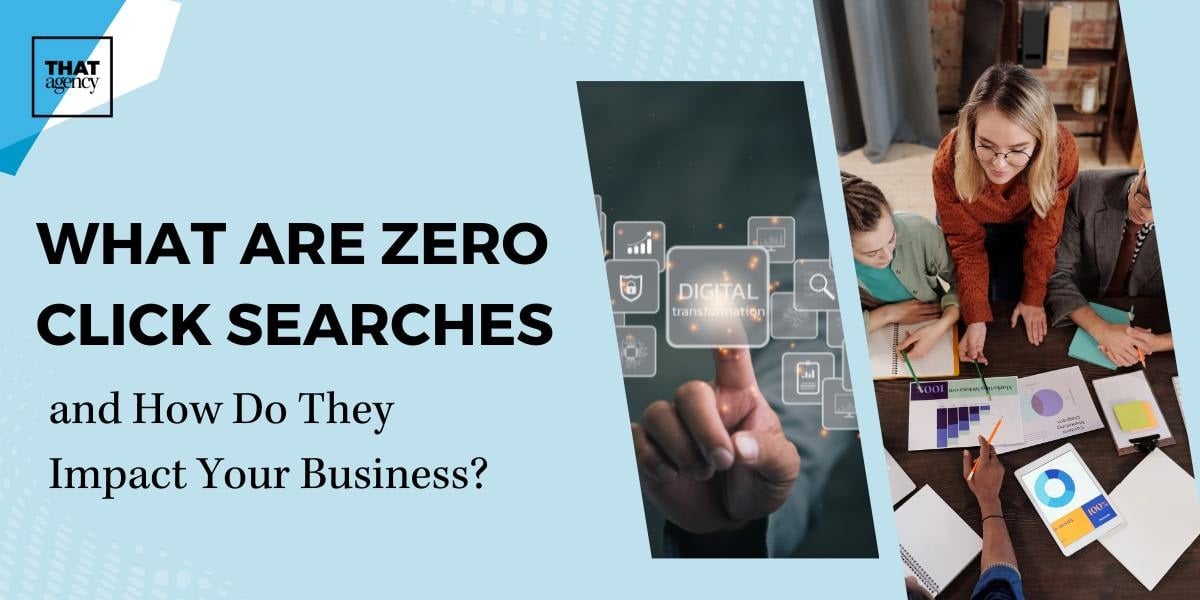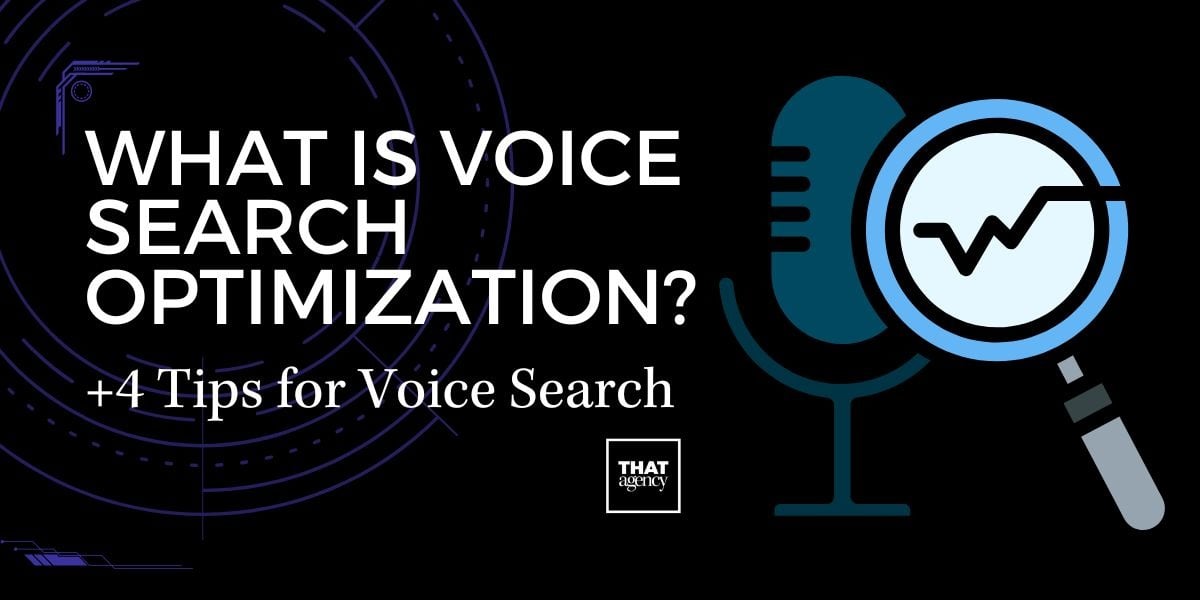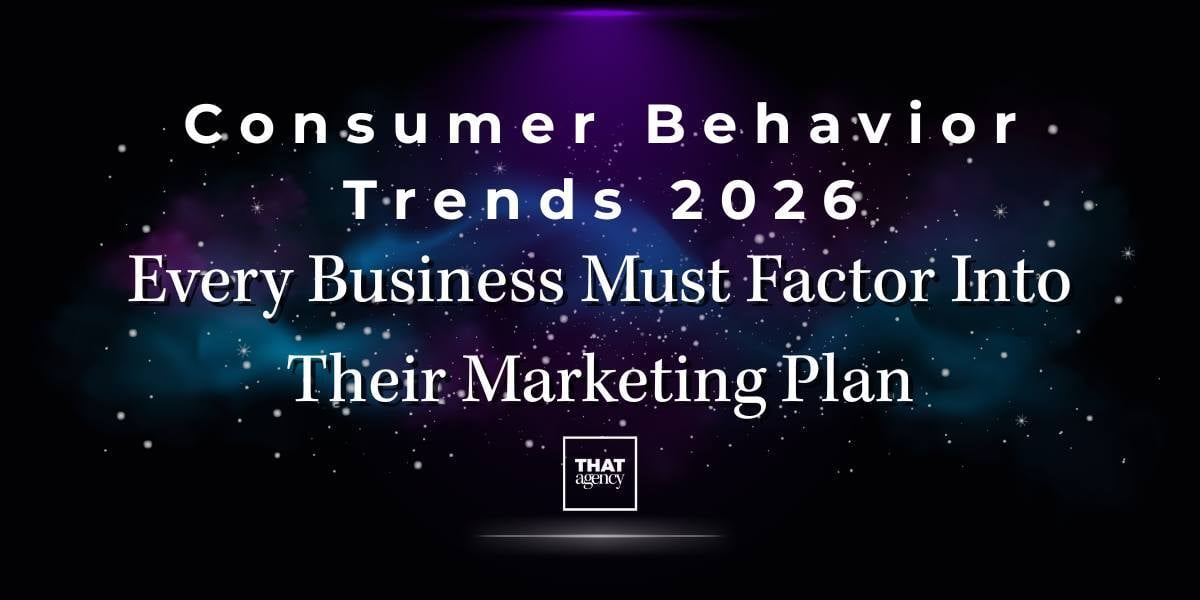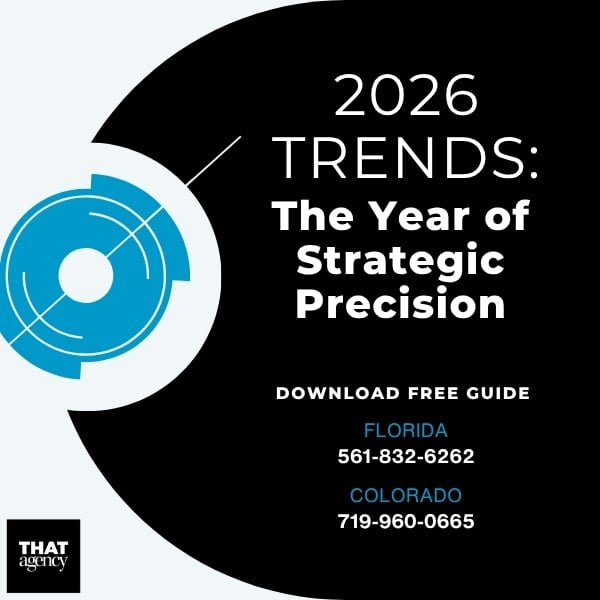I have a riddle for you. What is the one thing that everyone has access to, but very few understand how to effectively use? The answer is social media! Literally anyone can pick up a mobile device and start snapping pictures, tweeting or posting stories.
While social media channels are easily accessible, brands can waste a lot of time (money) if they aren’t using these tools effectively or measuring social media performance appropriately. With all the activities that are possible with social media, how can you be sure that your efforts are generating actual business results? How can you measure the return on investment (ROI)? By following these five steps for how to measure social media ROI, you and your team can be sure your social media efforts are making an impact!
When people hear “ROI” (return on investment), they usually think of dollar signs. And yes, at the end of the day, we’d all love to rake in huge profits from our social media efforts. But here’s the truth: ROI doesn’t have to mean financial return, especially when it comes to social media.
In fact, focusing only on revenue can give you a narrow or even misleading view of your results. That’s because social media doesn’t follow a straight line from post to purchase. People rarely see one post and immediately buy your product. Instead, they interact with your brand over time, liking posts, watching videos, clicking links, maybe visiting your website a few times, before finally making a decision.
So what does count as ROI in social media?
ROI can be anything that matters to your brand’s goals.
That might be:
If you're working to build trust and visibility, for example, your return might be measured in follower growth, positive comments, social shares, or mentions from customers and influencers. Those signals show that your brand is gaining traction, even if you're not seeing immediate sales.
Let’s say you run a local fitness studio and you post a client transformation story on Instagram. That post might not get someone to sign up right away, but if it sparks comments like “This is so inspiring!” or “I’ve been thinking of joining,” then your content is doing its job, building trust and planting the seed.
Before you start measuring anything, take a step back and ask: “What’s the real goal of my social media strategy?” Are you trying to be seen by more people? Build a stronger community? Drive traffic to a new product page? Whatever the goal is, define it clearly, because that’s how you’ll know what ROI looks like for you.
Once you know what matters most, you can start tracking the right numbers to prove your progress. Ready to dive into the steps? Let’s jump in!
Before you can figure out whether your social media is working, you need to decide what you’re measuring, and why. That’s where key performance indicators (KPIs) come in.
KPIs are the specific metrics you use to track progress toward your goals. They give you something concrete to measure so you’re not just guessing or relying on “likes” alone. And remember: ROI doesn’t always mean money in the bank. It can mean growth in visibility, more engagement, or even better conversations with your audience.
The KPIs you choose should match the goal of your social media strategy. Here are a few examples:
If you don’t know what success looks like, you won’t know when you’ve achieved it.
By clearly defining your KPIs, you make it easier to:
Let’s say your main goal is to increase awareness. If you start stressing about why your posts aren’t generating direct sales, you're looking at the wrong thing. Awareness-based campaigns aren’t designed to drive sales overnight, they’re designed to make people remember your brand so they might buy down the road.
Here are some specific KPIs that many brands track:
That’s completely normal. Social media isn’t always a quick win. People need to see your brand multiple times before they’re ready to take action. That’s why tracking more than just sales is so important. Maybe your engagement rate is going up, that’s a sign your content is resonating. Or maybe your website traffic from social media is rising, that means more people are curious about your brand.
Don’t just guess what’s working, define it. Set clear KPIs that match your goals and track them regularly. Whether it’s clicks, shares, leads, or sales, having the right metrics in place gives you the clarity you need to measure success, tweak your strategy, and prove that your social media is making a real impact.
Once your KPIs are locked in, you’re ready for the next step: building a strategy that aligns with your business objectives. Let’s keep going!
Once you’ve identified your KPIs, the specific numbers that show whether you’re reaching your goals, the next step is building a smart social media strategy that supports those goals directly. This might sound obvious, but many businesses jump into posting without thinking about how their content actually connects to what they’re trying to achieve.
Think of it like this: If your business goal is to build brand awareness, your social media strategy should focus on content that helps more people discover your brand. That might mean posting helpful tips, entertaining videos, or eye-catching visuals that get shared. It also means running paid ads optimized for impressions (how many people see your content).
But if your goal is to drive traffic to your website or increase sign-ups, then your strategy needs to shift. In that case, you’d want to focus on clear calls to action (CTAs), product highlights, or lead magnets, and run ads that are optimized to send people directly to your website.
Nearly all major platforms, like Facebook, Instagram, X (formerly Twitter), LinkedIn, and TikTok, offer paid ad options to help you meet different objectives. But each one works a little differently.
Here’s a quick breakdown:
Pro Tip: Always match the campaign objective in the platform to what you’re measuring.
For example, if you want video views, run a campaign specifically optimized for video views, not engagement or clicks. This ensures your ad gets shown to the people most likely to watch.
It’s easy to make mistakes when running social media campaigns, especially when using paid ads. Here are some traps to avoid:
Start by asking:
Once you have these answers, you can build out a content calendar and ad plan that fits. And most importantly, make sure everything ties back to your KPIs. That’s how you’ll know if your strategy is moving the needle.
It’s not enough to just “be on social media.” You need to show up with a purpose. By building your social media strategy around your business goals, and matching your content and ads to the right metrics, you give yourself a real chance to succeed.
When your strategy is aligned with your objectives, your efforts become measurable, your data becomes meaningful, and your ROI becomes a whole lot easier to track.
Next up: let’s talk about tracking tools that make this all come together.
Now that you've defined your KPIs and built a social media strategy based on your business goals, it's time to focus on tracking. Why? Because if you’re not measuring what’s happening behind the scenes, especially on your website, you’re missing out on the full picture of how social media is working for you.
When people click on your social posts or ads and land on your website, you want to know:
This kind of data helps you understand what’s working, and what’s not. And the best way to get this information is by using tools like Google Analytics and social media pixels.
Let’s start with the Facebook Pixel (now often called the Meta Pixel). It’s a small piece of code that you add to your website. Once installed, it quietly tracks how people interact with your site after clicking, or even just viewing, your Facebook or Instagram ads.
Here’s why it’s a game-changer:
Is setting up the Facebook Pixel hard? Not really. If you use a platform like Shopify, WordPress, or Wix, there are plugins and integrations that make it simple. You just need access to your website’s backend and your Meta Ads Manager.
Google Analytics (GA) is another powerful tool that lets you see what happens on your website after someone clicks from social media.
If you’re not already using GA, you’ll want to set it up ASAP, it’s free, and it gives you deep insights into your traffic. But to get the most value out of it, you should also use UTM codes.
UTM codes are little tags you add to the end of a URL. They don’t change where the link goes, but they tell Google Analytics where that traffic came from and what campaign it was part of.
For example, instead of sharing a basic link like:
www.yoursite.com/product
You might share a link like:
www.yoursite.com/product?utm_source=instagram&utm_medium=social&utm_campaign=summerlaunch
That way, when someone clicks on the link in your Instagram bio, you’ll know exactly which campaign brought them there.
Do I need a special tool to create UTM links? No, Google has a free Campaign URL Builder that makes it super easy.
Once everything is set up, you’ll want to monitor metrics that tie back to your KPIs. Here are a few to start with:
If you’re not tracking your data correctly, you’re basically flying blind. You might be spending time (and money) on posts or ads that aren’t driving results, or worse, abandoning strategies that are working but just aren’t getting properly credited.
With the right tracking tools in place, you can confidently say:
Social media tracking isn’t just for big brands with big budgets. Every business can, and should, use tools like Google Analytics and social pixels to measure real results. These tools help you assign value to your efforts, see what’s paying off, and fine-tune your strategy over time.
The more clearly you can connect your social media activity to user behavior, the more accurately you can measure your ROI, and keep growing.
Up next, let’s talk about how to pull all this data together into one clear, easy-to-use dashboard.
By now, you’ve probably realized that social media creates a lot of data. Every post, ad, click, and comment leaves a digital footprint, and buried in all that data are the answers to one big question: Is this working?
To figure that out, you need one powerful tool: a reporting dashboard.
Think of a reporting dashboard like your car’s dashboard. It shows you everything you need to know at a glance, your speed, fuel level, and warning lights. In the same way, a social media dashboard shows you the most important numbers tied to your goals, all in one place.
This might include:
Instead of hunting through each platform or spreadsheet, a dashboard brings all that information together so you can make smart, informed decisions.
Without one, it’s easy to miss the bigger picture. Many brands make the mistake of looking at their results one month at a time, without recognizing patterns or long-term trends.
For example:
Having a dashboard helps you avoid overreacting to short-term dips and instead focus on what’s really moving the needle.
Nope! You don’t need a fancy, expensive tool to get started. There are free and low-cost options that work great, even for small businesses or solo marketers.
Here are a few solid options:
The best dashboards are tailored to your KPIs (remember those?). Depending on your goals, your dashboard might show:
How often should I check my dashboard? Weekly is a good rhythm for active campaigns, but monthly reviews help you identify bigger trends. Avoid obsessing over daily changes, they can be misleading.
This is where things get a bit deeper, but it’s important.
Your job when reviewing reports is to look for patterns that suggest what’s working, and then dig deeper to understand why. Maybe an influencer campaign boosted awareness, which eventually led to more direct traffic and conversions. When you can connect those dots, you’ll be able to show the true value of your social media strategy.
If you’re putting time and money into social media, you deserve to know what you’re getting back. A reporting dashboard helps you do just that. It organizes your data, highlights what’s working, and points out what needs improvement.
And as you build out more campaigns, your dashboard becomes more valuable, it tells a bigger story over time. That’s where the real power of measuring social media ROI starts to shine.
Measure, track, and learn, and your social media efforts will only get stronger.
Up next: Let’s talk about one of the biggest challenges in social media reporting, understanding what’s not being measured.
Okay, time for a little contradiction.
We’ve been talking about how to measure social media ROI and how important it is to track data, set KPIs, and review performance. And all of that is 100% true. But here’s the twist: even with all the right tools in place, you’re still probably only seeing part of the picture.
Let’s say you run a Facebook or Instagram ad, and someone clicks on it. They browse your website, maybe even add something to their cart, but they don’t buy anything right away. A few days later, they come back through a Google search or a direct visit and finally make a purchase.
If you’re only looking at Google Analytics (GA), you might not see the original social media click as part of that conversion journey. GA typically gives credit to the last click, which means your ad doesn’t get the recognition it deserves.
This is why we say you’re often measuring the “worst-case scenario.” Social media might have started the conversation with a potential customer, but if the purchase didn’t happen immediately after the click, that touchpoint might go unrecognized.
Because unlike pay-per-click (PPC) ads, which are designed for immediate action, social media is more of a long game.
Here’s what usually happens:
If you’re only measuring success based on immediate clicks and sales, social media might look like it’s underperforming. But in reality, it’s often the first spark in a longer journey.
Exactly. A study by HubSpot found that only 20% of people online are ready to make a purchase at any given time. That means 80% of your audience is still in the research phase. They’re learning, comparing, and thinking it over.
Social media is the perfect place to meet them during this phase. It’s where they get to know your brand, see your values, read customer reviews, and get a feel for what you offer, without pressure.
So no, social media might not always "close the deal" immediately. But it does play a major role in:
Here’s how to get a clearer picture of your social media impact:
Look at the full customer journey.
Use platforms and reports that let you see how different channels work together. For example, a user might start with social, continue through email, and finish with organic search.
Use multi-touch attribution models.
Tools like HubSpot, Adobe Analytics, or advanced GA4 setups can show how social media fits into the overall path to conversion, not just the last click.
Include social media in your lead nurturing.
Think of social as the beginning of a conversation. Use follow-up strategies like retargeting ads, email marketing, or CRM integrations to keep building the relationship.
Track more than just conversions.
Measure brand lift, sentiment, engagement, and referral traffic. These are all signals that your social efforts are working, even if sales come later.
It’s easy to get discouraged if your social media doesn’t drive instant conversions. But remember: social media isn’t always the closer, it’s the opener.
When you start viewing your efforts in the context of the entire customer journey, the value becomes much clearer. Social media helps people discover you, get to know your brand, and eventually decide to buy. That influence is real, even if it’s not always visible in the first click.
So yes, measure your social media ROI, but do it with patience, perspective, and the right tools. When you do, you’ll start to see just how powerful social media can be.
Measuring social media ROI is really tricky, but not impossible. As long as you are realistic about the data and the process by which you can measure social media ROI, you can get a clear idea of what your social media efforts are producing for your brand!
Editors Note: This content has been updated for accuracy
Tags: Social Media

What are Zero Click Searches and How Do They Impact Your Business?

What is Voice Search Optimization? +4 Tips for Voice Search

Leveraging Predictive Analytics Marketing for Smarter Decisions

Consumer Behavior Trends 2026 Every Business Must Factor Into Their Marketing Plan
.jpg)
AI Image Generation for Marketers: What’s Possible and What to Avoid
700 S. Rosemary Ave.
Suite 204-707
West Palm Beach, FL 33401
P: 561.832.6262
F: 561.832.7707

